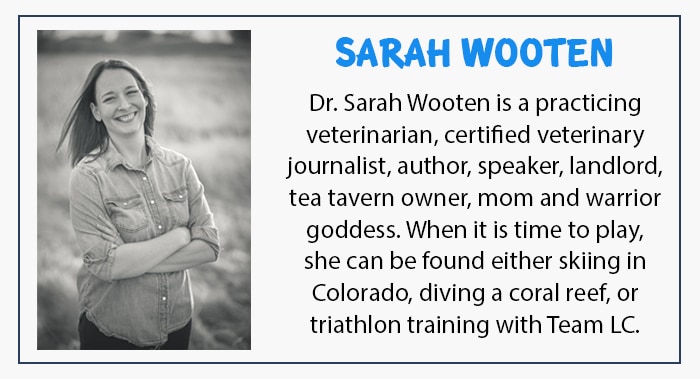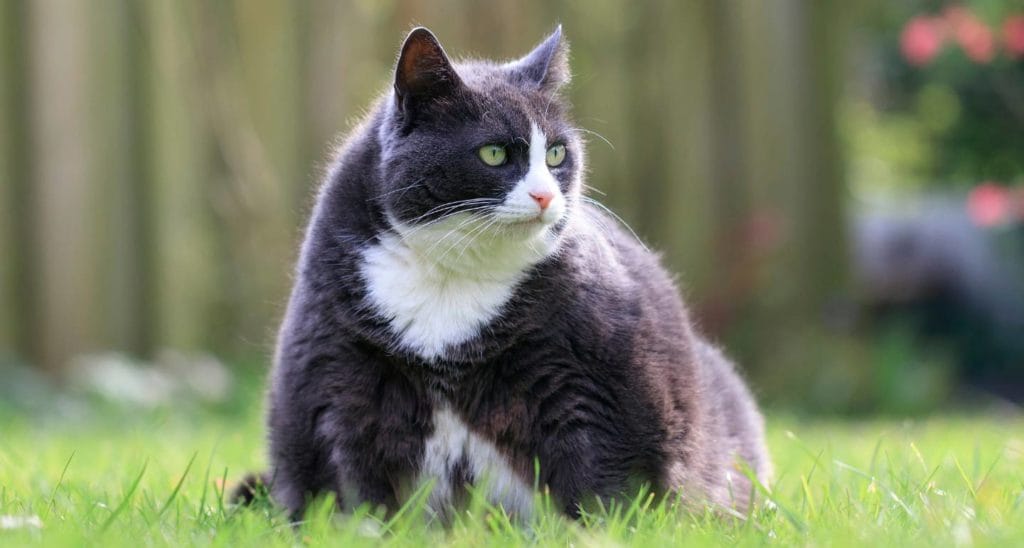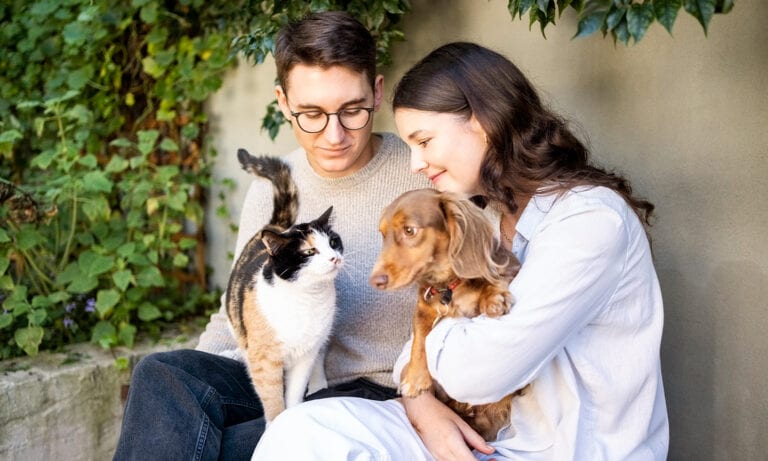Do you have an overweight dog or cat who can’t seem to slim down?
The United States is facing an epidemic of overweight cats and dogs. According to the Association for Pet Obesity Prevention, approximately 59% of cats are overweight, and 54% of dogs are overweight. If you have been told by your veterinarian that your dog or cat is too heavy, or if you have noticed yourself that your favorite fur friend has put on a few pounds, then it’s time to implement a weight loss program so you don’t end up with an obese dog or obese cat.
Most of the time, it is fairly easy to get overweight dogs and overweight cats to lose weight—you just decrease the calories and increase exercise, and over time, the pet drops the unhealthy pounds. Sometimes, however, it isn’t that simple. Cats, for example, can be notoriously difficult to diet. Small dogs, or dogs with medical conditions that affect their metabolism, such as Cushing’s Syndrome or hypothyroidism, can have a difficult time taking off excess weight. Here are some helpful tips:
Work With Your Veterinary Team
If your pet isn’t losing weight on a diet, then it’s time to talk to a professional. Yes, I know that going to the vet takes time and money, but I encourage you to think of scheduling an appointment with your veterinarian to talk about your pet’s weight as an investment in your pet’s health. I guarantee your veterinarian will be thrilled that you took the initiative! Your veterinary care team provides the following benefits:
- Determine your pet’s ideal weight
- Determine the exact number of calories needed to reach that weight, and can tell you exactly how much to feed and when. (Nine times out of ten, when a pet isn’t losing weight, especially easy-to-overfeed cats or small breed dogs, it is just because they are getting fed a little too much.)
- Recommend a therapeutic weight loss pet food that can facilitate fat loss and muscle building
- Give ideas for how to get your pet to move more
- Uncover any medical conditions interfering with your pet’s ability to exercise, such as arthritis, and provide treatment recommendations
- Test your pet for any medical conditions that might be interfering with weight loss
- Provide follow-up support and accountability. Losing weight takes a team!
Try Slow Feeders
One of the hottest weight loss tools out there is no-bowl feeding systems, also known as slow feeders. No-bowl systems are basically food puzzles that pets have to work to solve. When they solve the puzzle, they get to eat one kibble at a time. For overweight dogs, try the Aikiou Junior Dog Slow Bowl. This dog food puzzle effectively challenges pups to spend their time picking out the food from the obstacles instead of simply gulping down their kibble as quickly as possible. Overweight cats can benefit from the Trixie Activity Strategy Game Tunnel Feeder—this toy distributes the food among separate tunnels, encouraging your cat to take her time eating her meal.
These no-bowl food puzzles also have the added benefit of environmental enrichment—many overweight cats eat too much because they are bored. By feeding using a no-bowl system, you provide for their mental and emotional wellness as well.
Looking Into Therapeutic Diets
Science has provided us with incredible new diet formulations that are specifically designed to help overweight dogs and overweight cats lose excess body fat and build muscle. Muscle is the largest metabolic organ in the body, and the stronger and healthier muscle is, the higher the calorie burn and metabolic rate. Veterinary diets like the Hills Metabolic Diet is an excellent product. If you switch your pet to a therapeutic diet, follow the feeding instructions from your veterinarian, as pets can still gain weight on a weight loss diet if they eat too much of it.
Vegetables Are Your Pet’s Friends
Feeding treats is an important part of the human-animal bond, but there can be too much of a good thing. Make sure to include any treats in the overall daily calorie count. I suggest feeding raw or cooked vegetables to obese dogs—most dogs love green beans, carrots and cucumber. I know my dog will eat just about anything that I give her—except kale, but who can blame her? You can also give some fruit, such as apples—but watch the calorie count, and be aware that some dogs can develop diarrhea from consuming too much fruit. When in doubt, always talk to your veterinarian. She or he will be happy to advise you.
Still No Progress?
If you have been faithfully following your veterinarian’s weight loss plan for a month or more and have not seen any weight loss progress, then it is time to look for a reason. Make sure everybody in the household is on the same team—sometimes you have multiple people mistakenly feeding the obese cat, or maybe you have kids in the household that drop a lot of food on the floor for the obese dog to eat. Ask your veterinarian about having blood tests run to check for hormonal conditions that can contribute to obesity, such thyroid or adrenal problems. Above all, be patient with your pet and with yourself—weight loss doesn’t happen overnight. If you take steps in the right direction, eventually you will reach your goal, and your pet will live a longer and healthier life because of your care.

Share:












